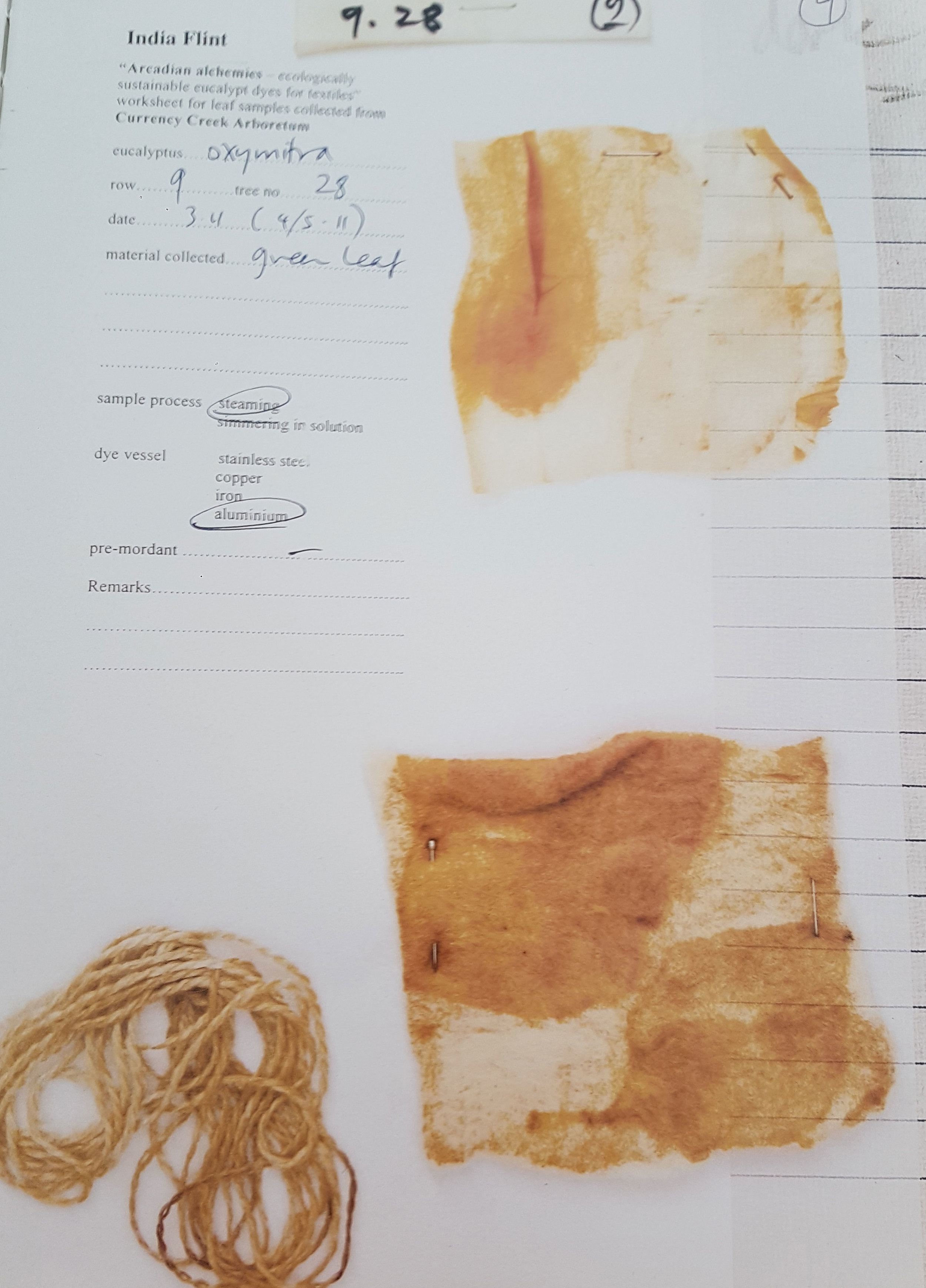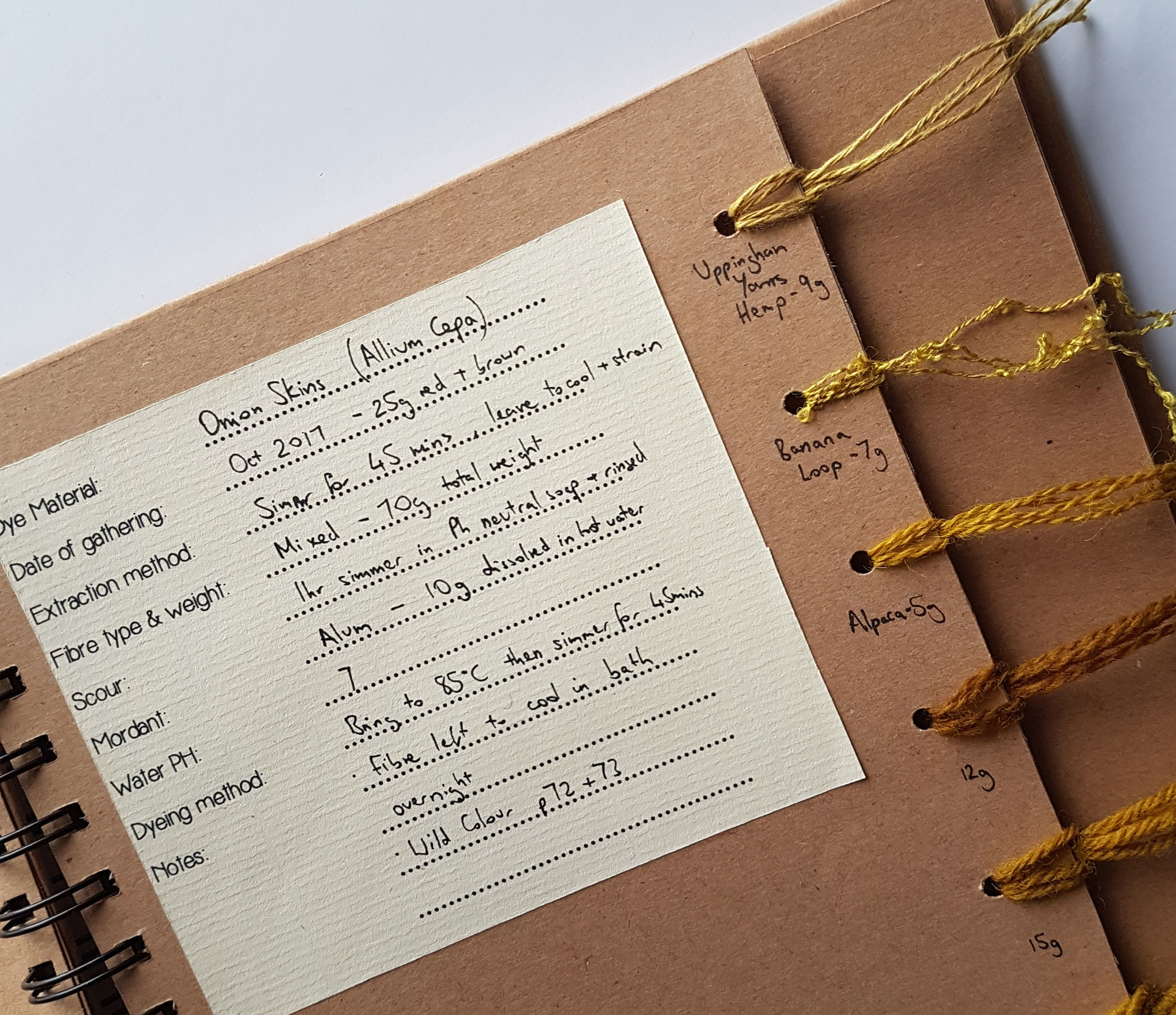The Importance of Documentation
There are so many variables to be considered when working with Natural Dyes - dyestuff, fibre, weight of fibre, method of dye extracting, dye recipe, mordant, Ph of water, time...the list is almost endless! Documenting the method is so important if you wish to recreate the colours again, and so I have been keeping a dye journal as I go along.
All of the instructional dye books I have read have a page or so dedicated to. A particularly good one can be found on page 14 of Hetty Wicken's book, Natural Dyes for Spinners and Weavers.
Wickens, H. (1983) Natural Dyes for Spinners and Weavers. London: Batsford. 14-15.
Flint, I. Eco Color.
India Flint's template is more suited to her eco-printing method, however I like the fact that her worksheets are specific to the project and location she is working on. I also find it reassuringly 'scruffy'! It looks like the notes were made in situ and so are really likely to get wet or stained.
I have used both of these examples, plus notes made on a dye workshop, to construct my own dye journal - see picture below. I imagine this will get added to and evolve with my practice.
Burns, R. (2017) Dye Journal. (Owen Collection)
References:
Burns, R. (2017) Dye Journal. (Own Collection).
Flint, I. (2008) Eco Colour. Colorado: Interweave.
Wickens, H. (1983) Natural Dyes for Spinners and Weavers. London: Batsford.
If you’ve enjoyed reading this blog and found it helpful, why not buy me a virtual coffee on Ko-Fi? There’s no obligation, but your support will help me continue to write these blogs and help me continue my journey to becoming a self-sufficient natural dye grower and knitwear designer. Ria :)



